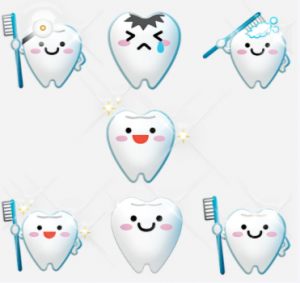Tooth whitening or teeth bleaching is the procedure of brightening the shade of your teeth’ exterior colour. Teeth whitening can be done professionally by a dental practitioner. It can also be performed at home by following a few easy steps and tips provided here. Whitening is generally desirable, especially when teeth become discoloured over time and is often done by changing or enhancing the tooth’s internal or external colour.
 There are several ways to achieve Teeth Whitening Adelaide. One method is called bleaching, which is where chemicals are applied to the teeth whitening them. This is followed by a supervised procedure where a particular instrument is used to transmit the chemicals into the teeth’ enamel, creating a reaction that changes the colour of the tooth. The most common chemical that is used in teeth whitening treatments is hydrogen peroxide. Bleaching can provide dramatic improvements in the appearance of teeth where other methods have proven ineffective.
There are several ways to achieve Teeth Whitening Adelaide. One method is called bleaching, which is where chemicals are applied to the teeth whitening them. This is followed by a supervised procedure where a particular instrument is used to transmit the chemicals into the teeth’ enamel, creating a reaction that changes the colour of the tooth. The most common chemical that is used in teeth whitening treatments is hydrogen peroxide. Bleaching can provide dramatic improvements in the appearance of teeth where other methods have proven ineffective.
In some cases, tooth sensitivity can occur after teeth whitening. This is usually short-lived and will pass with time. Some people experience tooth sensitivity after bleaching. Sometimes this sensitivity occurs because of a lowered immune system and not enough blood flow to the gums. Another possible cause is a lack of oxygen to the gums. If this is true, it may only require the administration of an antibiotic to relieve the problem.
If tooth-whitening products are used in combination with proper dental care practices, you can help reduce the risks associated with tooth bleaching. You should always talk with your dentist if you are considering tooth bleaching to make teeth white. Your dentist can help you find the right products for your teeth and gums, but it is essential to follow his or her advice carefully.
All teeth whitening products contain both carbamide peroxide and hydrogen peroxide. The concentration and amount will vary according to the product. Most commonly, the higher the peroxide content, the greater the whitening activity. There are generally safe carbamide peroxide and hydrogen peroxide levels, although repeated exposure to high concentrations can cause tooth sensitivity.
There are two types of teeth whitening toothpaste on the market today. One type contains nitrate-free gels. These products are recommended for use after brushing to remove surface stains and food residue. These products also rinse more thoroughly than regular strips or trays do. Nitrate-free toothpaste is generally less expensive than the other type of product.
Another type of teeth whitening treatment is a bleaching paste. These products are applied with a special tray and used just like a mouth rinse. Again, the concentration of active ingredient varies, but most are around a percentage of carbamide peroxide. This method generally produces the best results in terms of appearance and brightness. It takes a few weeks between applications. If you want whiter teeth while waiting for your bleaching paste to work, you may consider using a bleaching mouth rinse to wash out any food residue before your treatments.
Teeth Whitening Adelaide products have come a long way since their early days. Today, you can find a variety of over-the-counter and prescription products available. Even some at-home whitening kits are available, including pens, gels and trays. The key to teeth whitening success is choosing the right product for your whitening needs: whether you are trying to whiten sensitive teeth or brighten your smile at home, consult your dentist.
Whitening toothpaste is one of the most effective teeth whitening products on the market today. They use abrasive particles that scrub away stains and prevent them from returning. Generally, the stronger the toothpaste, the better it will work. To test for toothpaste that will work for your teeth whitening needs, do a search on the internet for “whitening kinds of toothpaste” or ask your dentist.

